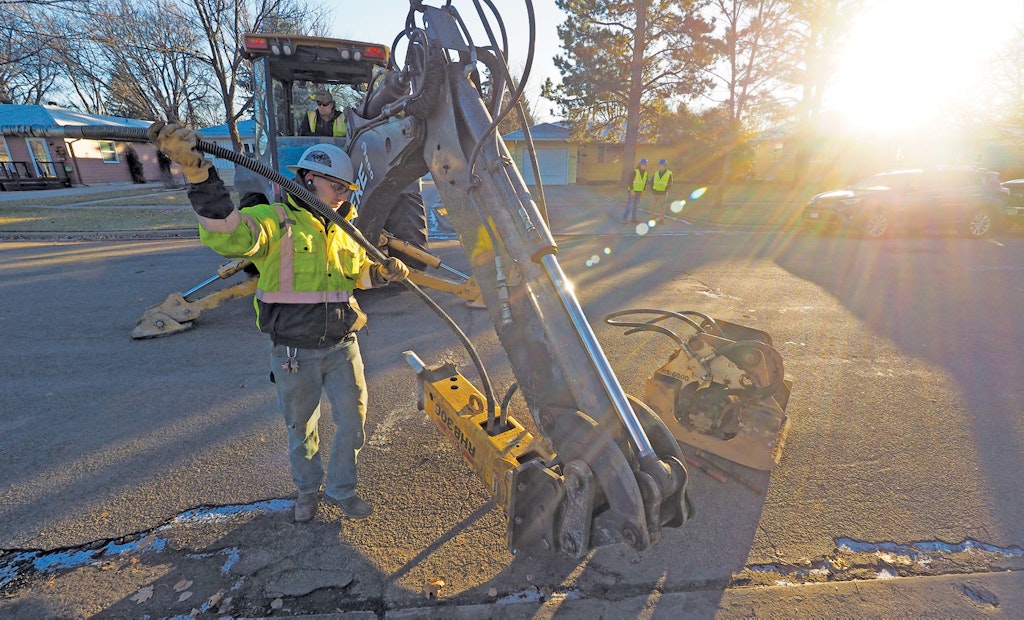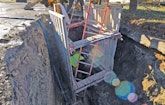
Lead heavy equipment operator Chris Perlichek changes out a hydraulic plate compactor for a breaker hammer as equipment operator Shane Werre prepares to break sections of a residential street. The two were part of a crew responding to a residential water main break. (Photography by Brad Stauffer)
A well-thought-out approach to water main replacement is saving money and minimizing disruption in Moorhead, Minnesota.
The Moorhead Public Service utility works closely with the city of Moorhead to plan replacement of the aging cast iron pipes in its 220-mile distribution...









